When you think of Scotland, you think of images of beautiful mountains, wild nature and the mythical highlands that still hold the essence of the noble Scots, clans and struggle for independence. Scotland is 78,000 XNUMX km 2 country, neighboring England and surrounded by the Atlantic Ocean and the North Sea.
Incarnated mystery, passion and honor with a rich history and a unique culture, Scotland still fascinates travelers from all over the world. Scotland was called Alba by the Scots and renamed Caledonia by the Romans, and Scotland has the image of the strong and powerful rebel, ready to stand its ground against some of its enemies.
To discover Scotland means to discover an inviting wilderness; from the impressive highlands to the surprising archipelagos of the Orkney, Hebrides or Shetland Islands, it is a country that is proud of its origins. Scotland can be identified as the "Queen of Europe" with sheep, sea climate, reputation for being stormy and rainy, fun cows with strange haircuts (called Highland cattle) and great historical sites, such as Edinburgh or the Culloden battlefield.

History of Scotland:from Roman invasion to Brexit
Watch the famous TV show Outlander , Scotland represents freedom and wilderness. With Roman soldiers, Vikings, noble clans, monarchs and enlightened philosophers, Scotland's history is so rich and epic that you could almost hear the shouts of violent clans in the splendor of the highlands.
The first occupation of Scotland dates back to Paleolithic times. These inhabitants were nomadic hunter-gatherers, hunting for wild animals and gathering fruit, plants and berries. The very first settlement in Scotland took place around 3000 BC, in the Neolithic period.
Roman invasion led to the registration of Scotland's history. They renamed the country Caledonia and considered it a low-advanced country, compared to the greatness of the Mediterranean world. They tried to conquer this northern country and built Hadrian's wall to defend the northern border and the Antonine wall over Central Scotland. Unfortunately for them, they never managed to take control of Caledonia. In the 5th century, Roman withdrew from Scotland, and their enemies were too strong to be defeated.
Around 800 AD Vikings began to migrate from Norway and Denmark, to trade and settle in Scotland. These skilled sailors settled in the west, while the Picts and Scots forged a new kingdom north of the River Forth:the kingdom of Alba.
As we all know, Scotland's relationship with her nearest neighbor, England, was seldom friendly. In the 13th century, the struggle for independence began. When Alexander III of Scotland died, Edward I, King of England, considered himself the new King of Scotland. His troops marched north and generated bloody sieges. In 1297, Scots attacked English troops at Stirling Bridge and caused a retreat. Among them was one of the strongest characters in Scottish history:William Wallace. Infamous warriors in the War of Independence included Robert the Bruce, crowned King of Scotland in 1306. His troops defeated Edward II at the Battle of Bannockburn in 1314. This led to the Arbroath Declaration in 1320, and regarded Scotland as an independent sovereign state.>
In the 15th century, another great character met England for Scottish sovereignty:it was Mary, Queen of Scots, Stuart. When her father, James V, died, she was six days old and became Queen of Scotland. Due to the Catholic-Protestant conflict, England feared a revolt by Catholics. In addition, Mary represented a threat to Elizabeth I, and her recognition as the only queen. She therefore kept Mary in captivity for 19 years, before she was executed in 1567. But for Mary Stuart, Queen Elizabeth I died childless. Then came Mary's son, James VI, who succeeded his mother to the throne of Scotland, James I of England.
And conflicts between the Scots and the English continued, even after the creation of Britain in 1707. The Jacobite cause gained several supporters, but it all ended in April 1746, during the Battle of Culloden. Scottish warriors were massacred within an hour, and Highland Clearances forced the remaining members to leave the highlands. This clearance involved the expulsion of tartans and the end of clan chiefs.
Since the 1920s, Scotland has been struggling to maintain its economy, especially with the drilling of North Sea Oil in 1967. Scotland's culture gained significant power in the 1990s with films such as Braveheart and the Harry Potter saga. However, although the Arbroath Declaration recognized Scotand as independent, this declaration was largely symbolic. Referendums for Scottish independence took place in 2014. Although the referendum stated that 55% of the people of Scotland decided that the country should remain in United Kingsom, there are still strong riots for independence today. Most people believe that with Brexit, Scotland will finally have its long-awaited independence. Continuation follows…
The importance of clans before Culloden
Highland Clearances happened after Culloden. It forced the survivors of the battle to move away from the highlands, where the most important clans lay. The exile of the tartan made it impossible to identify ancient proud Scots.
Tartans
Tartans were first mentioned in 1538; they were made of wool, dyed with local plants and berries and were 16 feet long (almost 5 feet). Longer in the back and shorter in the front, the kilt was wrapped around the waist and attached to the shoulder.
"Sporran" (a small bag), a needle and "sgian dudh" (pronounced ski-an doo), a small dagger in socks, are the complementary accessories to a kilt for official celebrations.
Today, the kilt is shorter, with lighter tartan and worn for celebrations such as weddings, Highland Games and ceilingidhs, a traditional ball.
Discover some examples of different tartans here:

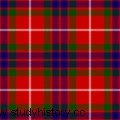


Clan Armstrong Clan Fraser Clan Campbell Clan Johnstone

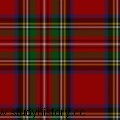

Clan MacTavish Clan Stuart Clan Wallace
Crest tags
Completing the role of Tartan Scottish Chamber was also a way to identify a clan and its members. It was proof of allegiance to a clan or a clan chief. They became more popular on 19 th century, like tartans, influenced by Victorian romance.
Outlanders fans among us are aware that the motto Clan Fraser of Lovat is JE SUIS PERST. Coming from French, it means "I'm ready". Their comb mark represents a deer head.
Another example with Clan Johnstone; their mark represents a golden winged track. Their motto is NUNQUAM NOT PARATUS , which means «Never unprepared». And Clan Johnstone still has a boss, even if that role is only symbolic.
Clans
Tartans and chamber marks were ways to create identity and unity with a clan.
Clans of Scotland has ancient origins in the Celtic and Norse traditions. The word "Clan" is derived from the Gaelic word "clann", and refers to a close-knit group of relatives. Anyone who promised their allegiance to the boss could use the clan's name as their own.
Geographical areas represent the ancient sites of clans:for example, Clan Campbell ruled over large parts of the highlands. The clan system still fascinates travelers and Scottish lovers. In Irish mythology, clan members were descendants of demigods. In fact, they were probably the king's descendants.
A sense of identity and kinship was one of the main reasons for being part of a clan. But through turbulent times, it was also the best way to survive. Constant struggle for land and resources was fierce between clans. And let's not forget Norse invasions, English attacks, Jacobite uprisings ... More reasons to be part of the clan instead of protecting yourself alone. A clan was a noble incorporation. A boss controlled all aspects of the clan's life. Men of responsibility and influence helped him as members of the clan. In addition to this glory was the clan warrior elite, also called the "fine". These warriors were strong and hungry on more land, always ready for a good fight against enemies to defend their clan.
If you had promised allegiance to a clan chief, your life would not have changed much from the farmer's life. You still have to care for pets, work in the fields and feed your family. In August, you had the opportunity to do some sports, since that was the period of the Highland games. And sometimes you were sent on a "reveing" with your companions to steal livestock from neighboring clans.
Without forgetting that you could always live under the threat of inter-clan feuds, conflicts with the Irish Gauls and above all the danger that the English monarchy could represent. And we must be honest:the British threat was the most dangerous of all; as it brought about the fall of the clan system.
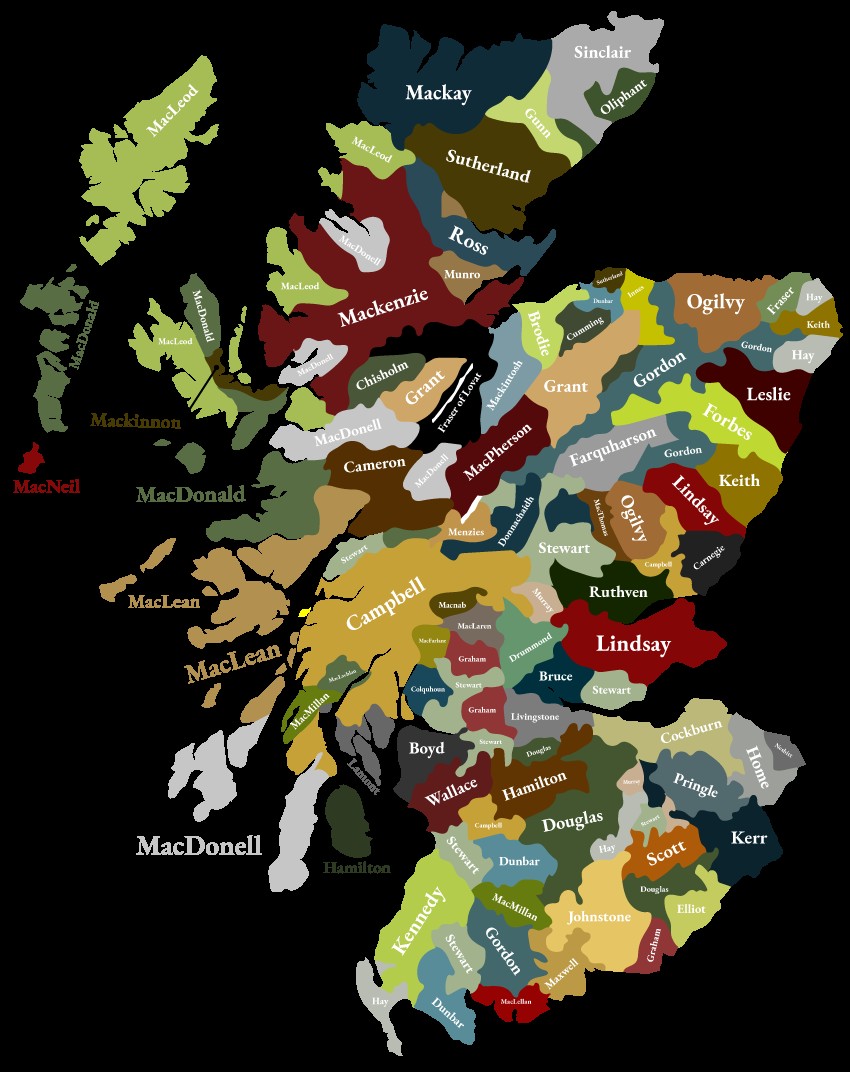
Cultural life in Scotland
Scotland's culture and customs remain remarkably strong despite her unification with Britain. Next to the thistle and Scotland's national flag, the bagpipe has a choice as a symbol of Scotland, although they have an ancient origin and are found all over the world. It is in the 16th century that different clans established hereditary pipers. The use of this instrument during wartime became a tradition to get the passions of soldiers before battle.
The popularity of bagpipes led to the popularity of traditional music in Scotland. Even Scotland's songs give Highland Cathedral or Scotland the Brave goosebumps, as they can make Scotland's glory unpleasant.
Another tradition associated with struggle is dance, such as Ghillie Callum ("the sword dance"). Sword Dance is from the 15s and consists of crossing two swords on the ground in an "X" or "+" shape, and the dancer will dance around and in the four quarters of it. It could be the kind of dance soldiers who would do before they started a fight. It became one of the animations from Highland Games. One of the most famous activities in the Highland games, created after ancestral sports games, in the 4th century, is to "throw the cab" (first a tree trunk before it became a heavy pole) and hammer throw.
On the food side, Scotland gained an important reputation with Haggis; a sheep's stomach filled with the sheep's pick (heart, liver and lungs) and cooked with onions, oatmeal, suet and spices. Haggis is associated with National Day, also known as Burn's Night in Scotland, and is a very popular dish.
Celebrated on 25 January, this evening celebrates the life and work of Scotland's national poet, Robert Burns. But Scottish cooking has a variety of foods, such as Angus beef, porridge, stovies (a potato stew), shortbreads, scones and toffee, not to mention Scotland's national drinks:whiskey and IRN BRU. The term whiskey is derived from Gaelic uisge-beatha , which means "water of life". IRN BRU is the second national drink in Scotland; consumption was once higher than Coca Cola. It is an orange soda and has a very specific taste.
Myths and legends about Scotland
Before preparing your bag and the best hiking boots to discover Scotland, you must be aware of all the myths and legends that built Alba's reputation as a land of mystery.
Fingals hule
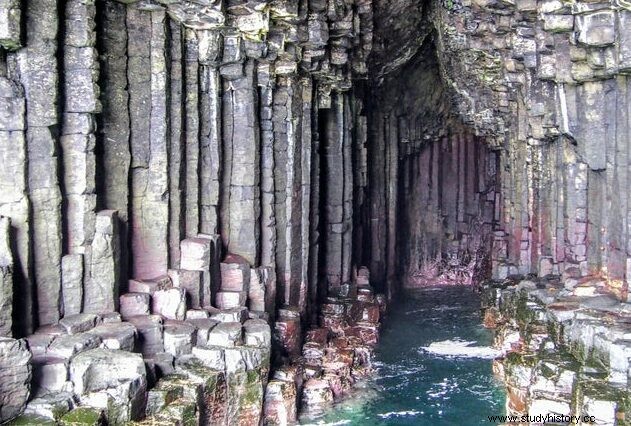
This sea cave is located on the uninhabited island of Staffa in the Hebrides. Hexagonal basalt columns form the inside of the cave, as unique acoustics when you are inside. Some give the origin of this cave's name to the eponymous hero in an epic poem by James Macpherson. Others claim that around 250 AD, Finn MacCumhaill, also known as Fingal, was the father of Ossian, the traditional bard of the Gauls. Strengthened by the Usian heroic songs, Fingal's name was a natural choice to assign to this dramatic and "musical" cave.
Gulf of Corryvreckan

This is not a Photoshop image; this is the reality. The Gulf of Corryvreckan is a narrow strait between the islands of Jura and Scarba, off the west coast of Scotland. Floats can be so strong that they can propel the water to waves of more than 30 meters. And sometimes currents generate whirlwinds, which gave this strait the reputation of being impassable.
According to legend, Breacan, the Norse king, had to anchor at the hot tub for three days and three nights to impress the father of a local princess. To do this he had three ropes:one made of hemp, one of wool and one of virgin hair. The purity of the virgin hair would make the rope unbreakable. The first night the hemp rope broke. On the second night it was the woolen rope, and on the third night the hairline also snapped. The prince drowned when the boat sank.
The virgin admitted that she was not as clean as she pretended to be. That's why the rope broke.
Robert The Bruce and the Spider
He played an important role in the wars for Scottish independence. Robert the Bruce is known in Scotland and around the world because of this. Crowned King of Scotland in 1306, he tried to liberate Scotland from English oppression. But he fled after the defeat at Methven. Hidden in a cave in the western islands for three months, he was ready to give up. Legend has it that he was currently watching a spider build a web at the entrance to the cave. The stormy Scottish weather made the spider's task difficult, and ruined the work several times. But against all odds, the spider finally succeeds in completing the net. Inspired by the spider's efforts, Robert the Bruce was ready to face the enemy again.
Loch Ness Monster
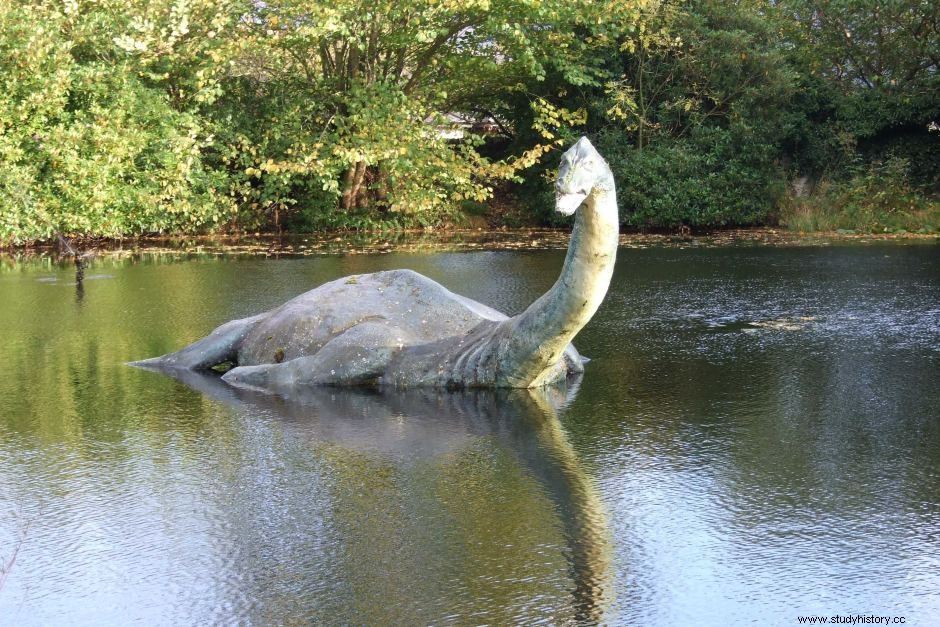
Has anyone else here grown up with the legend of Nessie, the Loch Ness monster? The legend of Nessie is one of the most famous in Scotland and still today an unsolved mystery. Hiding in Loch Ness in the highlands, Nessie's myth became an urban legend. Thousands of people testify that they saw a strange creature in the middle of the lake. Apparently very tall and thin, he has the tail and head of a snake and is also very shy. In 1934, a local farmer pretended to have taken a picture of Nessie. It turned out to be a fake one. Told you, very shy.
The Kelpies

The mythical kelpie is a Scottish water horse that haunts Scotland's lakes and rivers. This horse has the ability to transform into a human. He is attached to the Christian idea of Satan, with hooves instead of feet in his human form.
Robert Burns describes him as a lost dark gray pony with a dripping mane. The victims who will cross his path will not resist the desire to climb on his back. Therefore, the kelp takes them down to a watery grave.
Glencoe Valley
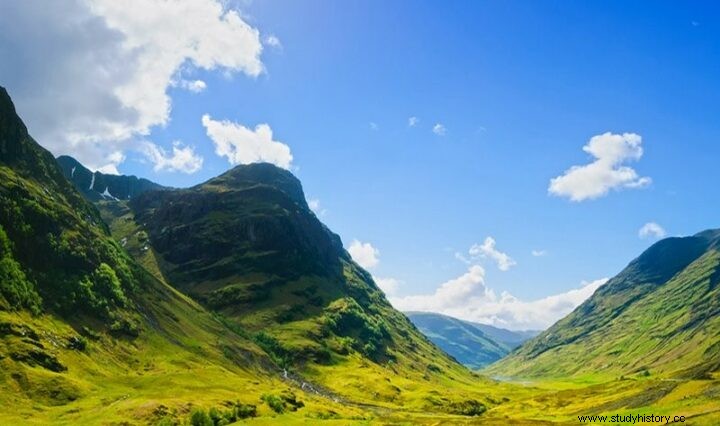
As beautiful as it looks, the Glencoe Valley is the site of the Glencoe Massacre on February 13, 1692. According to legend, Clan Campbell slaughtered its hosts, members of Clan MacDonald, while they slept. Survivors who managed to escape, died of the cold, alone in nature. Then ghosts haunted slaughtered members of the Clan MacDonald Valley for more than 300 years.
Here is a link that takes you to the recording of Andre Rieu's concert in Maastricht, in 2018, when the orchestra started playing Highland Cathedral, and when the audience started crying:https://www.youtube.com/watch?v=tAsdo0zMUyA
